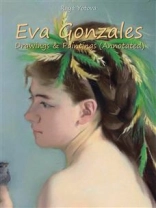Gonzalès’s work, according to some art historians, cannot be considered innovative but has charm and a sense of sincere personal expression, which gives her considerable value. Salon reviewers appreciated Gonzalès’ paintings for their natural intuition with which she had expressed her art, as well as her extraordinarily brilliant technical skills. Salon’s artistic reviews characterize much of her creative work by discussing her ‘female technique’ and her ‘seductive harmony.’ Also,...
Gonzalès’s work, according to some art historians, cannot be considered innovative but has charm and a sense of sincere personal expression, which gives her considerable value. Salon reviewers appreciated Gonzalès’ paintings for their natural intuition with which she had expressed her art, as well as her extraordinarily brilliant technical skills. Salon’s artistic reviews characterize much of her creative work by discussing her ‘female technique’ and her ‘seductive harmony.’ Also, art critic Maria Deraismes encourages Gonzalès that her art has overturned all prejudices against female artists who had previously existed in Paris.
Like Édouard Manet, Gonzalez never took part with her paintings at the Impressionist’s exhibitions in Paris but was considered part of their group because of their style of art.
By 1872, she was strongly influenced by Manet’s style, but later developed her own, more intimate manner. She has used her family members, especially her husband and sister Jeanne Gonzales, as models in her work.
In 1879 Eva married Henri Guérard, a graphic artist and engraver of her teacher Manet.
In 1883, Gonzalez died at the age of thirty-four, five days after the death of her teacher, Édouard Manet.












